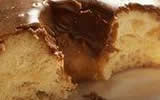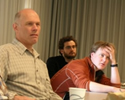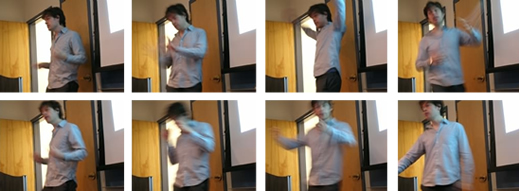

![]()
::: postdoc fellowships
::: senior fellowships
::: resident fellowships
::: associateships
![]()
being here
::: visiting
::: the last donut
::: photo album
::: center home >> being here >> last donut? >> 14 March 2006 |
Tuesday, 14 March 2006
Our modern version of this question looks like this: "What would the world be like if quantum mechanics were true?!" "How could we have ordinary objects--tables and chairs, you and me?" These were the questions our speaker, Cian Dorr, was asking today in the lunchtime colloquium. These question has been asked many times before and they have not lost their power over us. There were no empty seats in the room. Latecomers were standing in the doorway gazing about, perhaps in the hope that wishing might quantum mechanically create an empty chair. The questions hovered in the air as Cian began the rhythmical pacing while he spoke that would not stop for 55 minutes. Four paces, stop, turn, three paces, stop, turn, ... And he began to pull the answers from the air with grand motions. He canvassed the possibilities, slowly, methodically, systematically. The story built and began to look familiar. There were pieces of Everett and the notion of many worlds; and there was a diagram I recognized as a staple of papers written on the Bohm hidden variable theory. And then the juggle was over. The answer is a melange of Everett and Bohm, represented iconically by by a superposition of their two photos. Well--glad we we got that one sorted out?! Oh, if it were that easy, we wouldn't have been staring at this question for over half a century. So it is on to question time and the chance for Cian's audience to explain why they think it isn't that easy. John D. Norton Cian Dorr |

